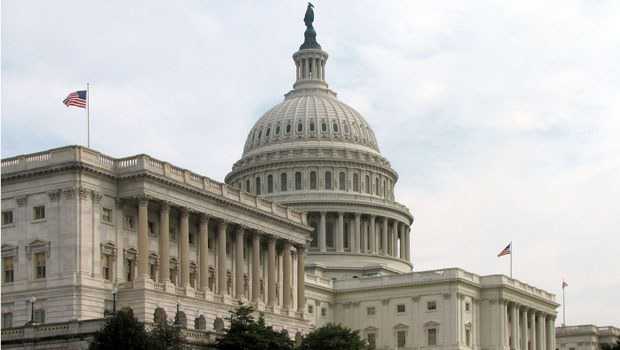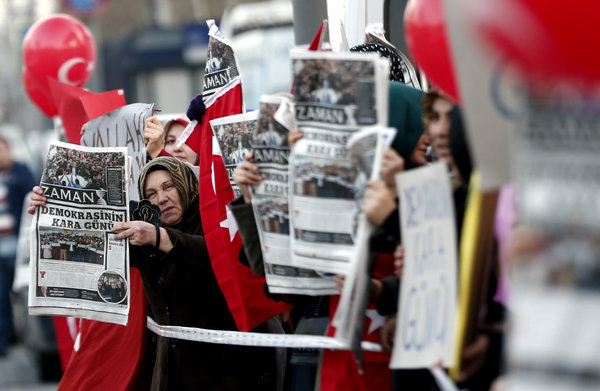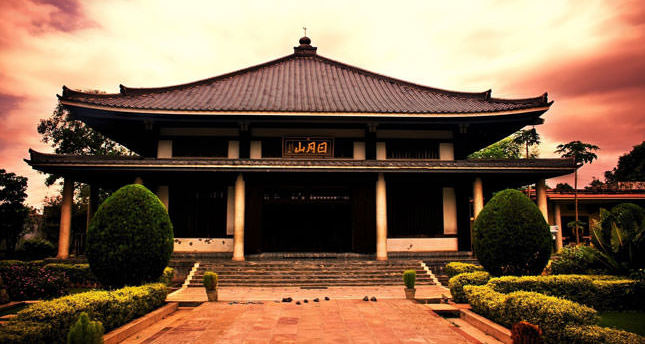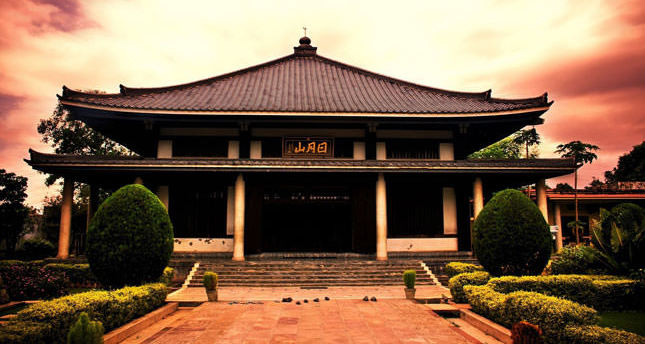Chapter 21 Ted Butler Research LLC.
This is a research report is from Ted Butler who is often quoted in various internet articles and has been quoted in the Financial Times.
The Congressional solution to this problem is for Congress to enact a law where the fines go to reduce Social Security debt and the division fined is spun off to a competing financial institution. The former employees and supervisors and banned from the industry.
With both houses of the same party in the United States, I foresee in the near future(3-6 months) a Congressional investigation.
Please read Ted Butler’s letter with interest.- ed
It has now been 14 years since I first started writing articles on silver for Investment Rarities, a precious metals dealer in business for more than 40 years. It was an association I originally assumed would last a couple of months. In mid-2000, I received a call from James Cook, the president of IRI. There had been a surge in precious metals sales for a number of years preceding Y2K and when no great disaster befell the world’s computers at the start of the millennium, sales fell dramatically. Cook had gotten my name from a friend of his who told him that I had been writing on the Internet about reasons to buy silver different than what others were writing.
After discussing silver from how I viewed its supply/demand fundamentals to how I had tried to end its price manipulation for the past 15 years (up until then) and seeing how bullish I was for the future price, Cook asked me if I would write something that he could send his clients. I told him that my prime purpose was to end the manipulation, but since I didn’t see how getting people to buy silver (then under $5) would be counterproductive to my main objective, I agreed to write an article or two. The first articles did persuade enough folks to buy silver and 14 years then went by in a flash. The amazing thing is that the issues I wrote about on the Internet before my association with Cook’s company are essentially the same as the issues I’ve written about up until today.
Over the years, since I wrote so many articles for IRI, Cook took it on himself (but certainly with my approval) to produce booklets from time to time which were compiled of various previous articles of mine and he offered them to his prospective clients. A year ago, Cook compiled a new booklet, the title of which is “How JPMorgan Manipulates and Controls the Gold and Silver Market.” Having run out of published copies, he’s contemplating publishing another batch and asked me if I thought an update would be appropriate. Considering the momentous changes in the silver market over the past year, particularly concerning JPMorgan’s role, I told him a postscript was certainly in order.
What follows is my proposed postscript for the booklet. Afterwards, I’ll comment on recent market activity.
Postscript – December 2014
This book has been a compilation of previously published articles, some dating back more than a decade. My discovery of the silver price manipulation goes back much further than that – almost 30 years. All market manipulations must have a kingpin or main player. While the title of this book is centered on JPMorgan, it was not until late 2008, that I discovered that this bank was the prime silver manipulator, by virtue of the Bear Stearns takeover. Since that discovery, I have focused extensively on the actions of JPMorgan in the silver market.
JPMorgan has dominated and controlled the silver market to an extent that I may have actually underestimated. Recent actions by the bank indicate the long expected end to the silver manipulation may be at hand. Not only is it consistent that the prime manipulator would be most responsible for prolonging a market manipulation that has lasted longer than any other in history, no such manipulation could end absent the role of the central player.
As much as I would have preferred a different outcome, the flow of data suggests that JPMorgan not only profited mightily on the historic silver price decline from nearly $50 in 2011 to under $15 recently; the bank is now positioned to reap the rewards of a soaring silver price. Simply put, over the last three and a half years, JPMorgan has completely reversed its previous position of being the world’s largest silver short holder to now being, in my opinion, the largest silver long in history.
I would have preferred, in a fair or just world, JPMorgan being punished either by the market or by the market regulators for manipulating the price of silver to such depressed levels, but instead it appears that the bank has avoided any reprisals for pushing prices first lower and will profit immensely on any upside move. What flow of data can I point to that would back up my assertions?
My primary data source is the government published Commitments of Traders Report (COT) which is released weekly. Along with the companion monthly Bank Participation Report, what the data show is that JPMorgan over the past nearly seven years, increased its massive concentrated short position in COMEX silver futures whenever silver prices advanced and closed out much of its short position on silver price declines. That may sound like plain old-fashioned good trading, but that description doesn’t apply when you hold such a large and controlling short position in a market so as to manipulate prices. Manipulation, after all, is nothing more than dominating and controlling prices.
Since JPMorgan never bought back its COMEX silver short positions as prices rose, but only when prices fell, its control of the market was complete and it always and only bought back shorts at a profit. At the extreme, on a number of occasions JPMorgan held more than 40,000 contracts of COMEX silver futures net short, the equivalent of 200 million ounces of silver. As a result of what only can be called market control, JPMorgan has closed out enough shorts to whittle down its silver short position to less than 7500 contracts. Clearly, even though JPMorgan has reduced its COMEX silver short position by more than 80%, that’s a far cry from the bank being long silver, to say nothing of being the world’s largest silver long.
One must look away from the COMEX to understand how JPMorgan could be the world’s largest silver long (owner) since the data indicate that the bank still holds a short position on the exchange, albeit the smallest such short position in 7 years. The evidence suggests that JPMorgan used its control of silver prices by virtue of its dominant COMEX market share to depress prices, not only to accrue profits on its short position, but even more for the express purpose of accumulating physical silver on the cheap. What evidence?
The evidence lies in the intentionally poor price performance of silver over the past nearly 4 years and the fact that the world has produced as many as 300 million ounces of new silver that has been excess to total fabrication demand. This extra silver had to be bought by the world’s investors and those investors did not appear to be aggressive buyers. In other words, someone had to buy the silver and since the world’s investors did not appear to be ready buyers, the metal was most likely bought by a non-traditional buyer. JPMorgan most closely fits that description for two reasons. One, buying physical silver was the most practical and efficient manner of closing out JPM’s documented COMEX short position and two, the silver purchases would be kept confidential since no reporting requirements attach to physical ownership. By buying physical silver, JPMorgan could cover its massive COMEX short position absent prying eyes.
Based upon deposit/withdrawal patterns in the world’s largest silver ETF, SLV, a pattern of physical silver accumulation emerges. In the big silver price takedown beginning in May 2011, some 60 million ounces of silver were redeemed from the trust as investors reacted to sharply falling prices by selling shares. The silver sold at this time was, obviously, bought by someone else; as there must be a buyer for every ounce sold. Who better a buyer than the world’s largest short holder at that time, JPMorgan? And over the past three and a half years, JPMorgan, by continuing to hold, albeit at a declining rate, the largest short silver holder becomes the de facto logical buying candidate.
Additionally, over the past 4 years, an unusually large amount of Silver Eagles have been produced and sold by the US Mint, some 160 million ounces, in a steadily declining price environment. Nearly as many Silver Eagles were sold by the US Mint over the past 5 years as were sold in the previous 23 years of the program. For the past four years, the Mint struggled to keep up with demand for Silver Eagles and frequently resorted to rationing coins. However, consistent reports from the retail dealer community indicated a falloff in broad retail demand for Silver Eagles.
The only plausible answer to this conundrum of record Silver Eagle sales and tepid retail demand was that a large entity or entities were behind the buying demand. Based upon the above, JPMorgan appears to me to the big buyer, accounting for 60-75 million coins over the past four years. All told, based upon SLV transaction, Silver Eagles and other forms of silver that could have been purchased, it is my guesstimate that JPMorgan could have accumulated 300 million oz of physical silver over the past four years; or three times what the Hunt Brothers were said to have bought by 1980. And please remember – there was a heck of a lot more silver in the world in 1980 than exists today; approximately 3 billion oz back then versus close to a billion oz today.
What this means is that the Hunt Brothers were found to have manipulated the price of silver by holding roughly 3% of the world’s silver bullion inventory, while JPMorgan has accumulated close to 25% of the world’s visible silver bullion inventory (adjusting for the 400 million Silver Eagles in existence). The Hunt Brothers buying caused silver prices to rise nearly ten-fold, while JPMorgan’s buying has been on steadily declining prices as much as 70% off the price peak of 2011. In my opinion, this could only be accomplished through an intentional downward price manipulation and by having the power and political connections of an organization like JPMorgan.
The intent of this postscript is to describe how JPMorgan has now gone full circle, by manipulating the price of silver lower for nearly 4 years for the designed purpose of profitably closing out its massive short position and of accumulating the largest physical silver position in history. As and when the bank has purchased what it feels is all silver it can accumulate, it follows the price should rise mightily. Certainly, if I am close to being correct about the amount of silver accumulated by JPMorgan, the potential profit to the bank is potentially epic. At $50, JPMorgan would be ahead by $10 billion compared to current prices; at $100, the bank would gain another $15 billion on top of that.
I confess to having some mixed feelings about JPMorgan owning as much physical silver as I suspect because there is a possibility that I may have (inadvertently) influenced them in their accumulation. After all, I have sent them more than 500 of my articles over the past six years in which I openly alleged that JPMorgan was the big silver manipulator. Of course, I did this to be upfront and give the bank every opportunity to object to or disagree with anything I had written. I’ve never heard back from JPMorgan.
As is always the case, the timing of the coming liftoff in silver prices is unknowable. But the odds of a big silver move up in time are overwhelming. And to all the favorable supply/demand realities that make up the odds, if my speculation about JPMorgan is correct, the most bullish factor of all has just been added to the mix.
End of postscript.
There have been a number of developments over the past few days that I’d like to comment on. First, sales of Silver Eagles from the US Mint continued to surge and yesterday it was reported that more than 43 million of the one ounce coins were sold this year, the most in the program’s 28 year history. The daily run rate increased (despite my observations on Saturday) and the Mint announced it will be ending sales for this year, probably by next week. As I indicated above, I still think JPMorgan has been the big buyer this year and for the past few years.
The new short interest report for stocks indicated a reduction of 2 million shares in the short positions of both SLV, the big silver ETF and in GLD, the big gold ETF. The cut-off date for the short report was Friday, Nov 28, when silver and gold prices fell sharply on high trading volume. I won’t call it a prediction, but in the weekly review of Nov 29, I wondered aloud if the sell-off that day might be related to short covering and the new report would seem to conform to that thought. In any event, it’s always good, as far as I’m concerned when the short positions in the hard metal ETFs goes down. https://shortsqueeze.com/?symbol=slv&submit=Short+Quote%99
I’m pretty sure that those of you who tuned into the CFTC’s public hearings yesterday on position limits came away fairly underwhelmed. The meeting wasn’t so much about position limits but more about specific agricultural issues related to position limits. As I remarked on Saturday, this is somewhat odd, seeing as position limits have been firmly in place in agricultural futures contracts, in some cases for more than 80 years. The main concern with Dodd Frank was getting position limits in place for the 28 physical commodity futures currently not subject to position limits, but nothing was covered in the meeting pertaining to that. However, this was a meeting of the agricultural committee (in which the US Secretary of Agriculture put in an appearance) and was advertised as such.
A number of readers have asked for direction in how to respond to the CFTC’s solicitation for public comments, seeing how we’ve been down this road before. My reading of the situation is that the CFTC is only interested in comments related to agricultural position limits and would most likely disregard comments on silver. I may change my mind, but I’m not inclined to submit a comment at this time and I’d like to explain why. It has nothing to do with the issue not being as important as I’ve represented in the past and everything to do with the signals the Commission has been sending on position limits.
Five years ago, I could hardly contain myself on the issue because it seemed that every time I turned around there was Gary Gensler, the former CFTC chairman, giving a speech or holding town hall meetings on the matter of position limits on the 28 markets lacking such limits. In contrast, today it seems the agency is just going through the motions. Whereas Gensler (correctly) hammered the issue to death, the current chairman seems to only include position limits as one issue among many more important issues. Judge for yourself with the prepared testimony of Chairman Massad today before a Senate committee.
I continue to believe that the issue of position limits in the 28 physical commodities will be resolved, but that it will have nothing to do with public comments. As I said, let me think it over as I may change my mind.
The price of gold and silver surged yesterday and held those gains through today’s trading. In silver, it was the first upside penetration of the important 50 day moving average in six months. I would imagine there was further technical fund buying, including both additional short covering and most likely new buying as well. The key question, of course, is who were the sellers and more specifically, how much additional short selling occurred by the 4 and 8 largest commercial shorts in both silver and gold. Because yesterday was the cutoff for the reporting week, this Friday’s COT should go a long way to answering the question.
While I’m resigned to some disappointment in increased concentrated short selling by the big commercials, I am still more interested in what has occurred over the past five reporting weeks, namely, the unprecedented outcome of the technical funds cashing in massive profit chips on the short side of silver and a good number of commercial longs (raptors) tapping out. Nothing close to this has occurred previously and I’m still convinced that this shocking turnabout portends important changes ahead, including a potential loss of trading liquidity. A loss of liquidity generally translates into bigger price moves and yesterday’s large price moves in gold and silver would tend to support my conclusion.
Even if the big gold and silver commercial shorts added aggressively to short positions yesterday that doesn’t mean they will be as successful as they have been in the past in capping prices, if as much commercial liquidity has been lost as I believe. Despite the rally, silver prices are still stupid cheap and destined to move sharply higher. Concentrated and manipulative additional short selling may create some serious price bumps (up and down) ahead, but at current depressed price levels for silver, there is a much greater risk of worrying about minor selloffs from here and missing the big move to come. If ever there was a time to hold a full load of silver and damn the torpedoes, that time would appear to be at hand. In any event, COMEX futures positioning remains the prime price determinant.
Ted Butler
December 10, 2014
Silver – $17.15
Gold – $1229
http://www.butlerresearch.com





 Although 64 different Quran verses instruct Muslims to follow the path of “modesty,” Turkish Religious Affairs Directorate President Mehmet Görmez has other ideas.
Although 64 different Quran verses instruct Muslims to follow the path of “modesty,” Turkish Religious Affairs Directorate President Mehmet Görmez has other ideas.


